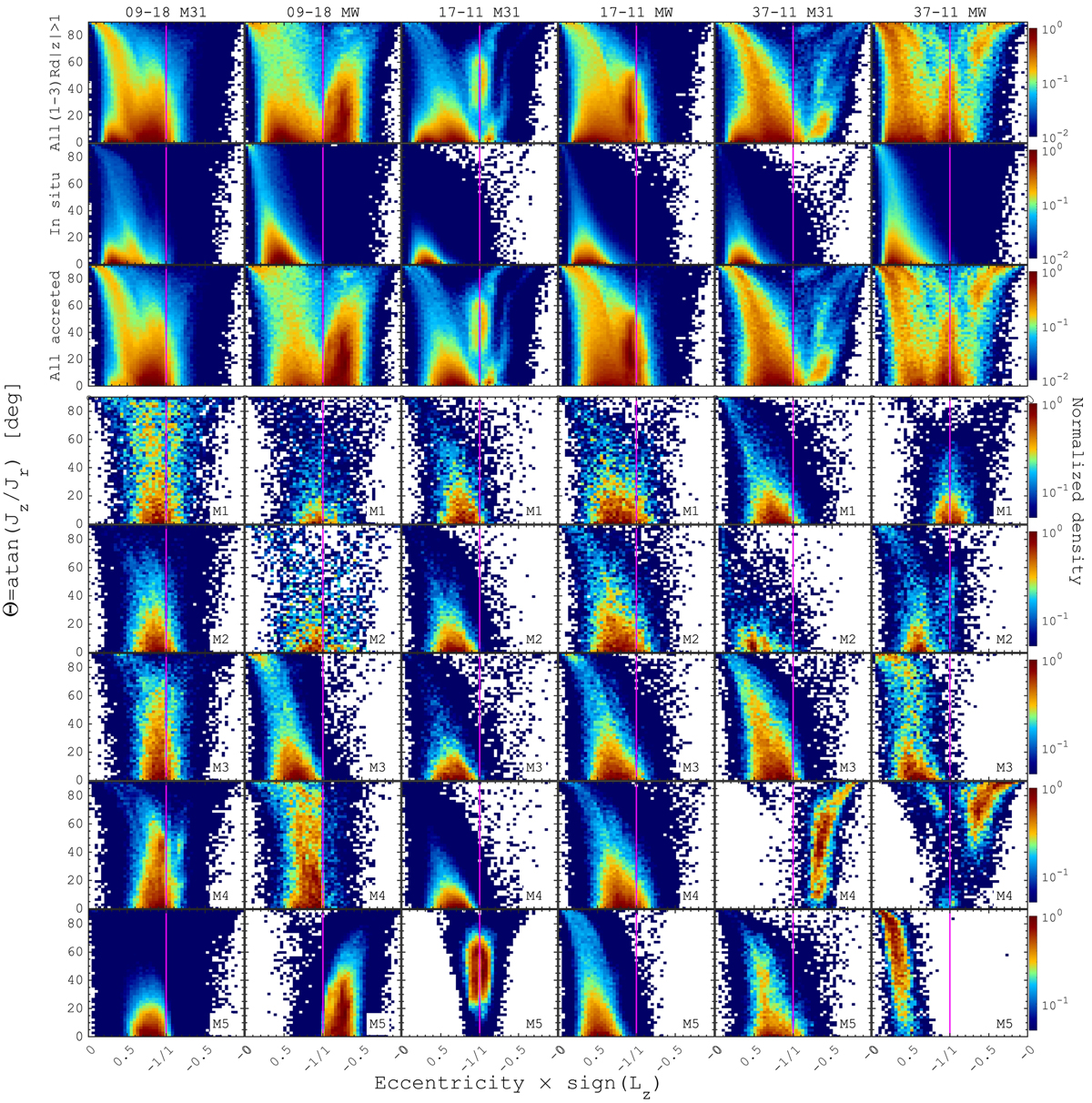Fig. 13.

Download original image
Density distribution in the Θ = arctan(Jz/Jr)-eccentricity plane for all stars (first row), in situ stars (second row), and all accreted populations (third row). All other rows below (fourth to eighth) correspond to the most significant merger remnants. The eccentricity values are multiplied by the sign of the angular momentum; thus, the counter-rotating stars have negative values of eccentricity and can be found to the right of the vertical magenta lines. To sharpen the structures, only the stars located in the (1 − 2)Rd radial range, where Rd is the disc scale-length from Libeskind et al. (2020), are presented here. The figure shows how the anisotropy of actions correlates with the orbital eccentricity for different populations. The in situ stars distribution shows the presence of vertically cold (low Θ angles) low-eccentricity stars representing a disc component; at higher eccentricities, Θ remains roughly the same. The accreted stars distribution is even more interesting, where there are many substructures, and the overall distribution is different from the in situ stars; moreover, different merger debris, in many cases, show different behaviour. The individual merger debris (fourth to eighth) do not represent the entire complexity of the arctan(Jz/Jr)-eccentricity space, which is more complex in the third row where all the merger debris are taken into account.
Current usage metrics show cumulative count of Article Views (full-text article views including HTML views, PDF and ePub downloads, according to the available data) and Abstracts Views on Vision4Press platform.
Data correspond to usage on the plateform after 2015. The current usage metrics is available 48-96 hours after online publication and is updated daily on week days.
Initial download of the metrics may take a while.


